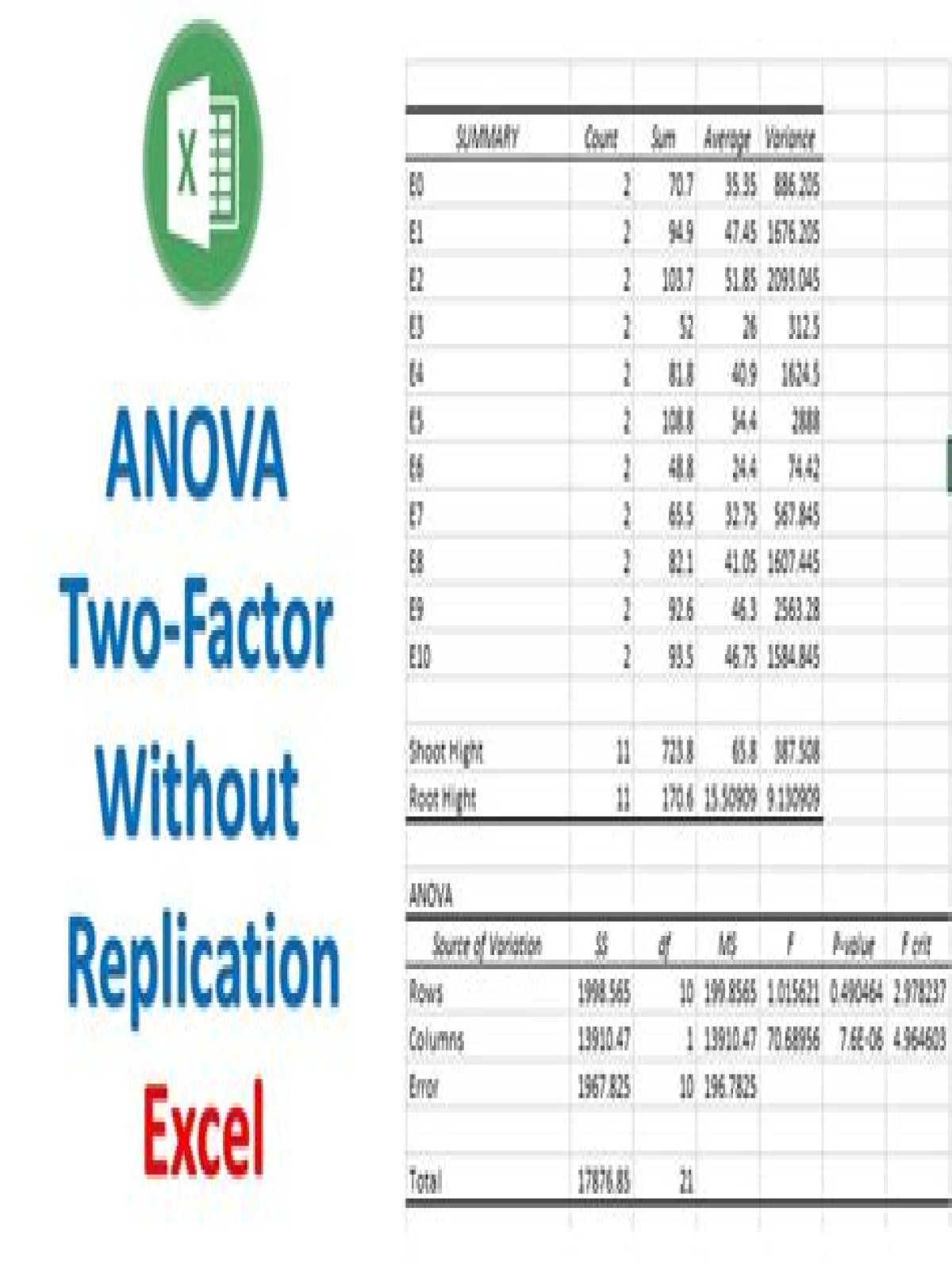How do you do two factor ANOVA without replication in Excel?
How do you do two factor ANOVA without replication in Excel?
Two Way ANOVA in Excel without Replication: Steps Step 1: Click the “Data” tab in the ribbon and then click “Data Analysis.” Install the Data Analysis Toolpak if you don’t see Data Analysis as an option. Step 2: Click “ANOVA two factor without replication” and then click “OK.”
How do you interpret a two way Anova without replication?
When you do a two-way anova without replication, you can still test the two main effects, but you can’t test the interaction. This means that your tests of the main effects have to assume that there’s no interaction.
What is the difference between ANOVA two factor with replication and ANOVA two factor without replication?
The fundamental difference between Anova two-factor with replication and without replication is that the sample size is different. In the technique with-replication, the total number of samples is mostly uniform. If that is the case, the means are calculated independently.
How do you do ANOVA two factor replication in Excel?
In Excel, do the following steps:
- Click Data Analysis on the Data tab.
- From the Data Analysis popup, choose Anova: Two-Factor With Replication.
- Under Input, select the ranges for all columns of data.
- In Rows per sample, enter 20.
- Excel uses a default Alpha value of 0.05, which is usually a good value.
- Click OK.
How do you manually run a two way Anova?
- Step 1: Define hypothesis.
- Step 2: Find the means for Row and Column.
- Step 3: Frame the ANOVA summary table.
- Step 4: Calculate DF (Degree of freedom)
- Step 5: Calculate SS (Sum of squares)
- Step 6: Calculate MS (Mean squares)
- Step 7: Calculate F (F value)
- Step 8: Calculate F-critical values.
How do you manually run a two-way ANOVA?
